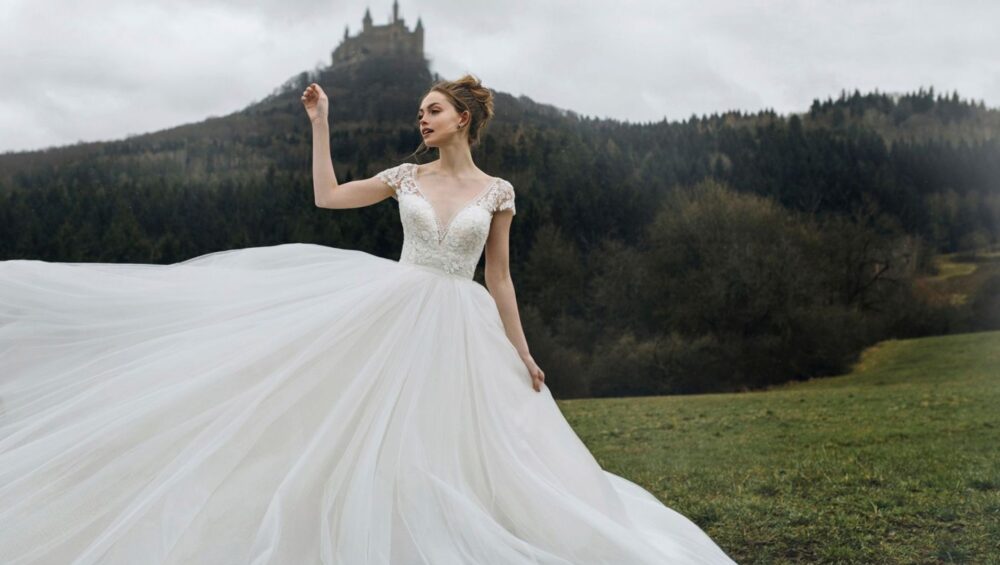Introduction:
Wedding ceremonies are not just celebrations of love and commitment but also reflections of cultural heritage and tradition. One of the most significant aspects of any wedding is the bride’s attire, particularly her wedding gown. From intricate embroideries to vibrant colors, traditional wedding gowns from around the world showcase the richness and diversity of global cultures. In this exploration of cultural couture, let us delve into the enchanting world of traditional Wedding Gowns Dubai, celebrating the beauty and significance they hold.

Experiencing the Wedding Dress in Dubai:
Dubai, with its cosmopolitan allure and rich cultural tapestry, serves as a melting pot of traditions and influences. The wedding dress in Dubai embodies the city’s unique blend of modernity and tradition, reflecting the diverse backgrounds of its inhabitants. From opulent silk creations adorned with intricate embellishments to flowing gowns inspired by Middle Eastern heritage, Dubai’s bridal fashion scene is a testament to the city’s cosmopolitan flair and boundless creativity.
The Saree of India:
In India, the saree reigns supreme as the epitome of bridal elegance and grace. Adorned with exquisite embroidery, intricate motifs, and vibrant hues, the saree reflects the cultural diversity and artistic heritage of the subcontinent. Each region in India boasts its own unique style of saree, from the regal Kanjeevarams of South India to the vibrant Banarasis of the North. The saree holds deep cultural significance, symbolizing femininity, beauty, and marital bliss.
The Hanbok of Korea:
In Korea, the hanbok is the traditional attire worn by brides on their wedding day. Characterized by its vibrant colors, flowing silhouettes, and intricate embroidery, the hanbok exudes elegance and sophistication. The colors of the hanbok hold symbolic meaning, with red representing joy and good fortune, while blue symbolizes fidelity and stability. The hanbok reflects the timeless beauty of Korean tradition, celebrating the union of two souls in harmony and love.
The Kimono of Japan:
In Japan, the kimono is revered as a symbol of cultural identity and timeless beauty. The traditional wedding kimono, known as the “uchikake,” features elaborate designs crafted from luxurious silk and adorned with auspicious motifs such as cranes, cherry blossoms, and pine trees. The uchikake embodies the grace and poise of Japanese culture, symbolizing purity, loyalty, and prosperity. With its intricate craftsmanship and timeless elegance, the kimono captures the essence of Japan’s rich cultural heritage.
Celebrating Diversity and Tradition:
Across continents and cultures, traditional wedding gowns serve as a poignant reminder of the rich tapestry of human experience and expression. From the intricate lacework of European gowns to the vibrant hues of Indian sarees, each garment tells a story of love, tradition, and celebration. As couples embark on the journey of marriage, they embrace not only each other but also the cultural heritage and traditions that unite them.

Conclusion:
In the kaleidoscope of global cultures, traditional wedding gowns shine as symbols of beauty, tradition, and celebration. From the wedding dress in Dubai to the sarees of India, each garment embodies the unique essence of its cultural heritage, reflecting the values and traditions passed down through generations. As we celebrate the diversity and richness of cultural couture, may we continue to honor and cherish the traditions that unite us in love and joy, regardless of borders or boundaries.





